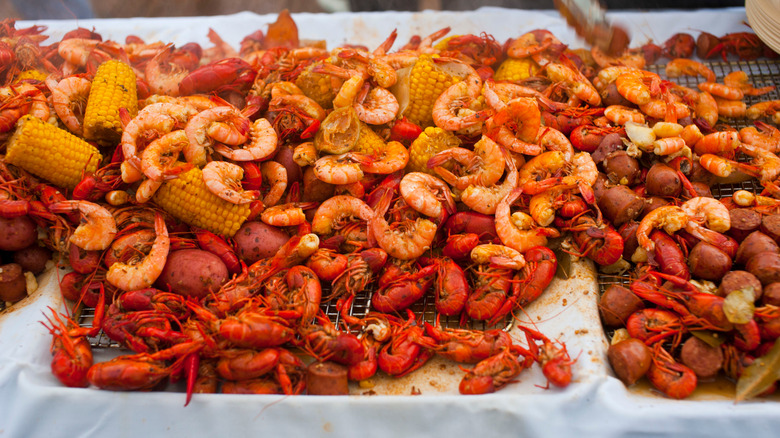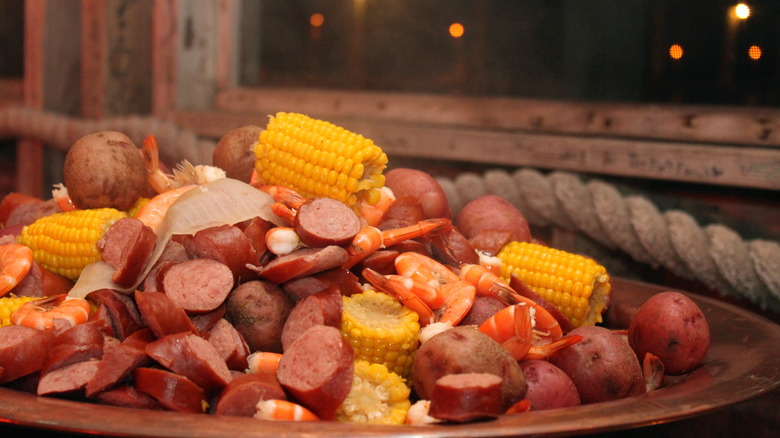The Difference Between Louisiana Crawfish And Lowcountry Boils
It seems like every coastal region of the US has some sort of seafood boil. From lobster in New England to the crab of the Chesapeake region to Louisiana crawfish and Lowcountry boils in the Gulf Coast. Webstaurant Store describes a seafood boil as one that includes a stockpot (albeit a giant one) with a particular shellfish used, which is dependent upon the region of the U.S. that you are in. Potatoes, corn, maybe some sort of sausage, and a mix of spices are added to the pot. It's a feast best cooked for big crowd.
In Louisiana, a crawfish boil is as much a part of the culture as Mardi Gras parades and the French Quarter. Made with the state's official crustacean (per the Louisiana House of Representatives), CajunCrawfish.com describes the crawfish a "poor man's lobster." The Cajun Grocer shares a local legend about how lobsters allegedly followed migrating French Canadians from Nova Scotia until they shrunk from the long trip. Of course, this is no more than folklore.
Houstonian Magazine credits the crawfish boil to the western Louisiana's Atchafalaya Swamp, where the Cajuns (Acadians from French Canada and Creoles who were African-Caribbean from French-speaking islands) would throw big parties when the floodwaters in March and April forced the shellfish from their burrows. This communal feast carried over to present day with crawfish boils happening at large family gatherings in backyards or for church fundraisers throughout Louisiana as a rite of spring.
Just spice and shellfish separate Louisiana and Lowcountry boils
Like its Gulf Coast counterpart, South Carolina's Lowcountry boil also happens seasonally, however it usually takes place in the fall. Its origins are traced to the Gullahs, who are African Americans living in the Lowcountry region, whose varied cultural roots influenced what went into the pot (via Brunswick Forest). African American Charleston explains that Gullah cuisine, which is rooted in the cooking from the African west coast, originated in slave dwellings. It was there that culinary masterpieces were prepared in a single pot from discarded food.
Charleston Magazine states that the modern Lowcountry boil, also called Frogmore Stew, continues today. It is credited to National Guardsman Robert Gay who adapted a family recipe that would efficiently feed 100 of his follow soldiers. He named his recipe after his hometown in South Carolina's Frogmore. After a surge of popularity, Gourmet magazine featured Gay's Frogmore Stew on its cover in the 1980s (per Charleston Magazine).
Shrimp is the seafood of choice for a Lowcountry boil. Like a crawfish boil, the Lowcountry recipe also includes potatoes, corn, and sausage. As the South Carolina Aquarium notes, shrimp is a key product of the Palmetto State. The seasoning all depends upon the boil, with the Lowcountry boil considered milder than its spicier Louisiana cousin (via Lobstergram).
Whatever your shellfish craving, pop it in a pot, grab some friends, some cold beers, and enjoy the fruits of the sea.

